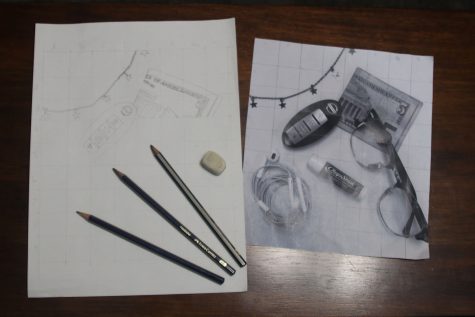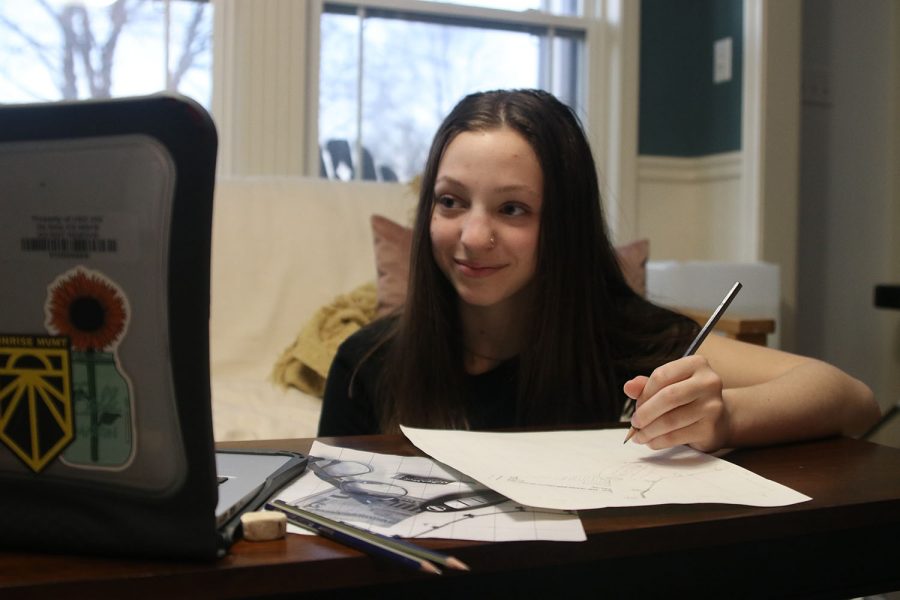Eyes on the computer and pencil in hand, sophomore Analia Stevens works on an art project for her Art I class Friday, Dec. 4. After the district transitioned to a remote environment, art projects became more independent since students now work on them at home.
New learning model forces art department to adapt
Modifying classes for a full-remote environment has posed unique challenges to the art department
The decision to change the district learning model from hybrid to fully remote affected all aspects of school life. One of the most impacted departments at the school has been the art department.
A large part of art classes is watching students’ creative processes and helping them overcome challenges as they encounter them. Now, because of the remote setting, art teacher Jodi Ellis is finding new ways to do so via Zoom.
“The difficult thing about changing to total remote from hybrid is not seeing the students at all,” Ellis said. “I can demonstrate on Zoom using my iPad as a document camera, but there is something about being there one-on-one when a student is struggling that yo

u cannot do in a full remote setting.”
Ellis has done much to overcome the challenges presented by teaching art class in the new model.
“I am trying to be more engaging [when teaching remotely] and I probably speak a lot more while they are working then would in the classroom,” Ellis said. “I have also learned to articulate steps for projects better. It is almost easier explaining things on Zoom, because I know I have to make it clear since I am not right there to check on understanding as I move through the room. I also am trying to do the same project they are so I can encounter the same difficulties they may be having and can hopefully talk them through to a solution.”
While the switch has proved a challenge for art teachers, some students like sophomore Analia Stevens like virtual art class better than in person.
“I prefer fully remote art class because I can take my time and work in a different environment,” Stevens said. “It helps me to focus, and my projects turn out better because I have more time to work on them.”
